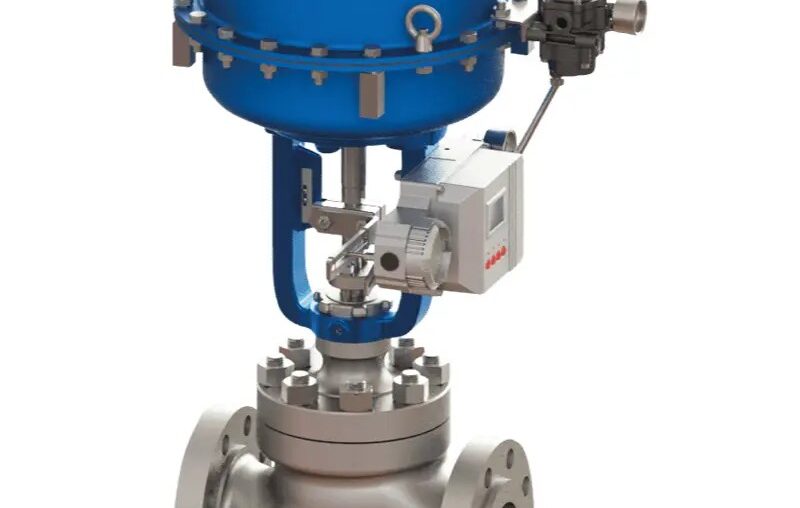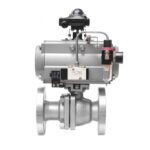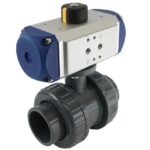Introduction
China Control valves are essential components in industrial fluid systems, responsible for regulating parameters such as flow, pressure, and temperature. One of the critical factors in determining valve performance is the design of the valve trim—specifically whether it uses an unbalanced or balanced trim. The choice between these two trim types affects not only the performance of the valve but also its suitability for different applications, particularly in terms of durability, maintenance, and overall system efficiency. This article explores the differences between unbalanced and balanced trim control valves, including their advantages, disadvantages, and how to choose the right trim based on factors like corrosion and erosion resistance.
What is Valve Trim?
Valve trim refers to the internal, wetted, and replaceable components of a control valve that directly interact with the process fluid. These parts are crucial in controlling the flow, pressure, and sealing of the valve. The main components of valve trim include:
- Stem – Transfers actuator motion to the plug or disc.
- Seat – Provides a sealing surface for shutoff.
- Disc or Plug – Controls flow by adjusting its position.
- Back Rings – Support and align moving parts.
- Guide Bushings – Maintain proper component alignment.
- Packaging (Seals) – Prevents leakage around the stem.
While the valve body and bonnet are in contact with the process fluid, they are not considered part of the trim because they are permanent structural components. The material selection and design of the trim are vital in ensuring that the valve performs effectively, lasts longer, and requires less maintenance. Engineers must carefully consider these factors when selecting valves for systems with varying pressures, temperatures, and fluid types.
Types of Trim Designs
Control valves feature two primary trim designs: unbalanced trim and balanced trim, each offering distinct operational advantages based on the application.
Unbalanced Trim Valves
- Design: Utilizes a solid plug design that does not include pressure-equalizing features.
- Performance: The full differential pressure across the valve acts on the plug, generating an unbalanced force.
- Requirements: Typically requires larger actuators due to the higher force generated.
- Ideal Application: Best suited for low-pressure applications where precise flow control is necessary.
Balanced Trim Valves
- Design: Incorporates pressure-equalizing features (e.g., holes drilled through the plug), which help balance the forces acting on the plug.
- Performance: The pressure-equalizing design reduces the net force on the plug, enabling more efficient valve operation.
- Requirements: Smaller actuators are sufficient, even in high-pressure applications.
- Ideal Application: Suitable for high-pressure systems with large pressure differentials.
Unbalanced Trim Control Valves
How Unbalanced Trim Works
In an unbalanced trim design, the plug or disc lacks pressure-equalizing features. As a result, the full differential pressure (ΔP) acts on the plug’s effective area, producing an unbalanced force (F = P × A). The actuator must overcome this force, necessitating larger actuators for higher-pressure systems.
Common Examples of Unbalanced Trim Valves
- Single-seated globe valves (the most common)
- Some double-seated valves (though they partially balance forces)
Advantages of Unbalanced Trim
- Improved Control & Stability: Provides excellent precision in flow regulation, especially in applications requiring fine adjustments.
- Simpler Construction: With fewer moving parts, unbalanced trim valves are easier to maintain and have lower failure risks.
- Lower Cost: These valves are generally less expensive, making them a good choice for budget-sensitive applications where high-pressure conditions are not critical.
- Reduced Cavitation Risk: The unbalanced design helps reduce cavitation, which can damage the valve and downstream equipment.
Disadvantages of Unbalanced Trim
- Higher Actuator Force Requirement: Since the actuator must overcome the full fluid force, larger, more powerful actuators are needed for high-pressure systems.
- Limited Suitability for High-Pressure Applications: Excessive pressure differentials can make the operation of unbalanced trim valves challenging.
Balanced Trim Control Valves
How Balanced Trim Works
A balanced trim design uses pressure-equalizing features, such as holes drilled through the plug, to allow fluid pressure to act on both sides. This minimizes the net force on the plug, reducing the actuator effort required.
Common Examples of Balanced Trim Valves
- Cage-guided control valves
- Balanced-plug globe valves
- Some rotary control valves
Advantages of Balanced Trim
- Lower Actuator Force Requirement: The pressure-equalizing design reduces the force acting on the plug, allowing smaller, more cost-effective actuators.
- Better for High-Pressure Services: It handles large pressure drops more efficiently, reducing the need for oversized actuators in high-pressure applications.
- Reduced Vibration & Noise: The balanced distribution of pressure minimizes valve flutter and vibration, resulting in a more stable operation.
- Reduced Seat Wear: The balanced forces extend the lifespan of the valve by reducing wear on the seat.
Disadvantages of Balanced Trim
- More Complex Design: The inclusion of additional components such as balance holes and seals increases the complexity of the valve, which may lead to more frequent maintenance.
- Higher Cost: The more intricate design and manufacturing process make balanced trim valves more expensive than unbalanced trim valves.
- Potential for Leakage: Balance holes may introduce minor leakage paths, necessitating tight tolerances and careful maintenance.
Trim Selection: Corrosion & Erosion Resistance
When selecting a valve trim, material choice is crucial, particularly in applications involving corrosive or erosive fluids. Here are key considerations for material selection:
1. Corrosion Resistance
The chemical composition of the process fluid influences material compatibility. Common corrosion-resistant materials include:
- Stainless Steel (SS316, SS304) for general water or steam applications.
- Hastelloy for highly corrosive fluids.
- Titanium for fluids containing chlorides and acids.
2. Erosion Resistance
Erosion occurs when abrasive particles in high-velocity fluids wear down the trim. For such applications, harder materials are preferred, including:
- Stellite or Tungsten Carbide for slurry or high-velocity applications.
Material Selection Guidelines
| Service Condition | Recommended Trim Material |
|---|---|
| General water/steam | Stainless steel (SS316) |
| Highly corrosive chemicals | Hastelloy, Monel |
| Abrasive slurries | Stellite, Tungsten carbide |
| High-temperature steam | Inconel |
Unbalanced vs. Balanced Trim: Key Comparison
| Feature | Unbalanced Trim | Balanced Trim |
|---|---|---|
| Actuator Force Required | High (due to full ΔP force) | Low (pressure-balanced) |
| Cost | Lower | Higher |
| Complexity | Simple | More complex |
| Best For | Precision control, low ΔP | High-pressure, large ΔP |
| Cavitation Resistance | Better | Moderate |
| Maintenance | Easier | More involved |
Conclusion
The choice between unbalanced and balanced trim depends on the specific requirements of the application:
- High-pressure systems with large pressure differentials favor balanced trim to minimize actuator requirements and ensure efficient operation.
- Precision control in low-pressure systems is better suited to unbalanced trim due to its finer control characteristics and lower costs.
For applications involving corrosive or erosive fluids, careful selection of trim material is equally important to ensure longevity and minimize wear. Engineers should consider all factors—pressure conditions, actuator sizing, precision needs, and fluid characteristics—when selecting the most appropriate valve trim design.
By understanding the distinctions between unbalanced and balanced trim, engineers can optimize valve selection, ensuring both performance and cost-effectiveness in fluid systems.Know more about China Manufacturer




